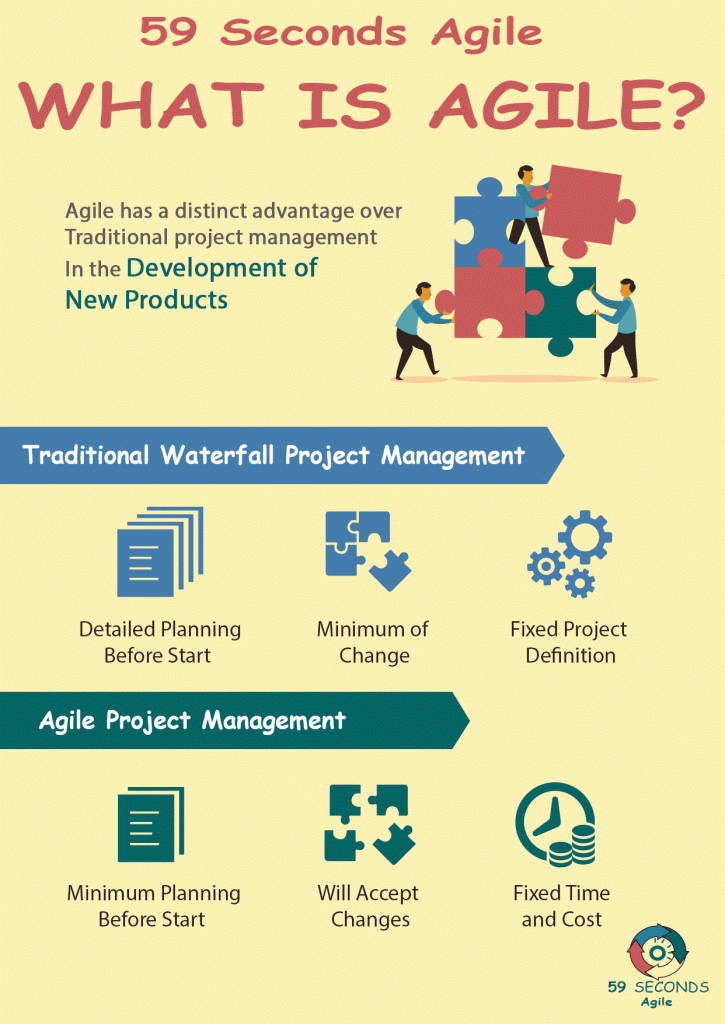This article looks to discuss ‘Sprint User Stories’. It provides an introduction to the User Story planning and the Scrum Sprint. The article also covers impediments and the Daily Scrum.
An Introduction into Agile User Stories
A 59 Seconds Agile Training Video
Continue to Part 9 Below
Sprint User Stories: How are user stories developed?
A 59 Seconds Agile Article
This article provides an ‘Introduction to Agile’ and looks to discuss what Agile is. It provides a brief introduction into the history of Agile and why Agile is important.
How are user stories developed?
Scrum has its ceremonies to facilitate the changes and development of user stories needed for developing the product increment for each Sprint. In order to ensure that the project is following its product roadmap closely, they conduct release planning sessions. In this meeting, high-level plans for project releases are made by making a guideline for which features should be developed for certain release dates.
User stories that are related to the scheduled features are then identified, to be further planned and refined in the ceremonies that follow. Another ceremony is the Product Backlog Refinement. This ceremony is for ensuring that user stories, especially those required for the upcoming release, are ready. Here, the Scrum team clarifies the acceptance criteria, estimate user story sizes, and, if needed, break down user stories further.
During Sprint Planning, the Product Owner and the development team decide together which user stories to scope for the Sprint. The product owner prioritizes the user stories, and the development team will commit to the user stories that they will develop during the sprint.
Acceptance criteria and user story sizes are still subject to be redefined and re-negotiated, since there are other factors to be considered such as capacity for the upcoming Sprint or feedback from the recent Sprint Review.
Sprint User Stories: Daily Scrum
The Daily Scrum is another ceremony in Scrum. Throughout the Sprint, the Scrum team will convene to review together how they are progressing with finishing tasks and the committed user stories. They discuss on a daily basis what was done, what is planned to be done next, and what the impediments are in completing the user stories.
When a Sprint is over, the Scrum Team presents the product increment to the customers and other stakeholders during the Sprint Review. This is where the Product Owner informs everyone on which user stories have been done, and which are still open. From this meeting, feedback given can be used to create more user stories, to be added to the product backlog and planned for implementation during Release Planning and Sprint Planning.
The last ceremony that we will discuss is the Sprint Retrospective. User stories are not the main artefacts being used in the Retrospective. This is the best time for the Scrum team to re-assess and re-strategize on ensuring that they commit to finishing the user stories in scope for future Sprints.
Continue Reading —> Next
The History of Agile
A 59 Seconds Agile Video Animation
Continue Reading —> Next
User Stories Applied
A 59 Seconds Agile Book Review
User Stories Applied by Mike Cohn is one of our favourite books on Agile User Stories. The book starts with an overview into user stories, and details what a user story is and the different aspects of them. He then discusses how to go about writing a user story, and provides details of the INVEST criteria that can be used to determine if the story is meeting all of its objectives. Next Mike gives an in depth discussion of who user stories are written for and where to begin when gathering the details for them. The book then discusses acceptance testing user stories, including how to go about specifying these criteria and the responsibilities of the development team and customers during this process.
Continue Reading —> Next
What is Agile?
A 59 Seconds Agile Infographic

Continue Reading —> Next
Agile Scrum Master Training Course
Our Favourite Agile Books
We found these books great for finding out more information on Agile Scrum:
Continue Reading —> Next


